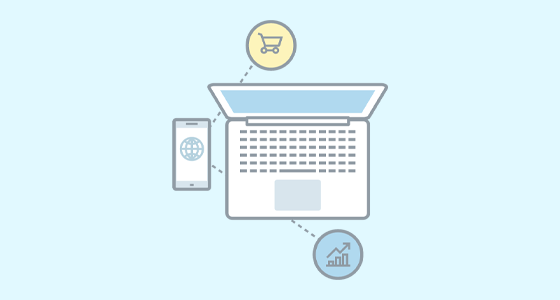The rise of omnichannel commerce, cloud and mobile technology has made it easier than ever before for buyers to shop where they want and how they want. If you’re a B2B business, establishing multiple channels as part of an omnichannel approach, especially online, can be a critical way to build and maintain a relationship with them.
If you can provide your buyers with a flexible shopping experience, one that satisfies all of their preferences, then you’ll have a huge advantage over your competitors. Not only will you increase your potential sales base, but you’ll also gain a much more loyal following.
That’s why omnichannel commerce is such an important part of any strategy today. If you aren’t doing omnichannel commerce, you’re holding yourself back and missing out on a major opportunity.
What is Omnichannel Commerce?
Omnichannel commerce is the use of multiple channels for your buyers to get information and place orders of your products.
Put simply, omnichannel commerce is the concept of providing buyers with a consistent shopping experience across different channels. The key concept is allowing the buyer to explore your business’s offerings and make purchases on whichever medium they happen to prefer at a given moment.
These can include on-site (physically present) sales and/or online shopping via desktop, smartphone and tablet. The more seamless the transition from one channel to another, the better. And for businesses with a distribution model, it can mean both working with your wholesalers and distributors while maintaining a limited direct to consumer presence.
For an example, think of Nike. Consumers can buy their shoes direct from their outlet stores and website, as well as through third party retailers and online shops. No matter where their customers are thinking about buying Nike products, they’re available. That’s the B2C version of omnichannel commerce.
But now consider the B2B equivalent. Nike can have sales reps that physically go to conferences, customer locations, and so on, using a mobile app that has all the buyers’ information at their disposal. They can also offer remote digital sales support via video conferencing. And they can offer a self-service order portal for their distributors to place their own orders. There, too, they’re meeting their buyers where they are to ensure they don’t miss out on sales.
Why Omnichannel? The Undeniable Benefits
Omnichannel commerce can give a boost to any business, and it’s becoming more standard throughout both the B2C and B2B sectors.
In a lot of respects, the argument in favor of omnichannel is very straightforward. For starters, it creates more avenues by which your customers can order goods, and that can translate into greater revenue.
To highlight just how significant this can be, McKinsey has been studying the evolution of B2B businesses and their buyers as the pandemic interfered with more traditional B2B business styles, which has historically been predominantly face to face. Some key findings:
- Two-thirds of B2B buyers felt more comfortable with a digital-only approach, whether remote human support or digital self-service transactions placed online.
- Businesses found it as effective or more effective using digital models for reaching 83% of customers, whether new or existing, over previous methods. In the U.S. that increased to 85%.
- Businesses are increasingly willing to invest in digital solutions as part of an omnichannel commerce approach for big sales. 47 percent of businesses are increasing spending to react to this changing reality, despite the uncertainties raised by the pandemic.
None of these advantages are exclusive to large companies, either. Smaller firms can expect to see similar benefits if they can offer an omnichannel shopping experience to their buyers, and can make a solid investment accordingly.
How to Personalize the Omnichannel Experience
To get the most out of omnichannel commerce, you need to aim for a personalized shopping experience, and that means that your Ecommerce platform needs to be fully integrated.
All of this speaks to the advantages of omnichannel in general. But to fully maximize its value, your business needs to go further.
For B2B buying, this can be things like the catalog available to each buyer – not every business may have access to the same SKUs. Pricing can differ by buyer too, so having that pricing readily available regardless of channel will smooth out concerns about buying through a different channel.
Finally, having the right payment options, such as what Net Terms and credit limit a buyer qualifies for, will assuage any buyer concerns.
Complete the Omnichannel Commerce Experience with Zoey
Zoey facilitates both in person and digital shopping experiences. The Zoey App, available for iOS/iPad and Android, provides salespeople with a simple and effective way to capture orders wherever they are, whether face to face or from a distance. And the Zoey Web provides buyers with a place to create their own orders and approve sales quotes. Both are linked to the Zoey Admin, which provide a back-end for businesses to create, manage and update products, orders, customers and more.
Learn more about our solutions and how we can help you establish the perfect omnichannel commerce experience:





